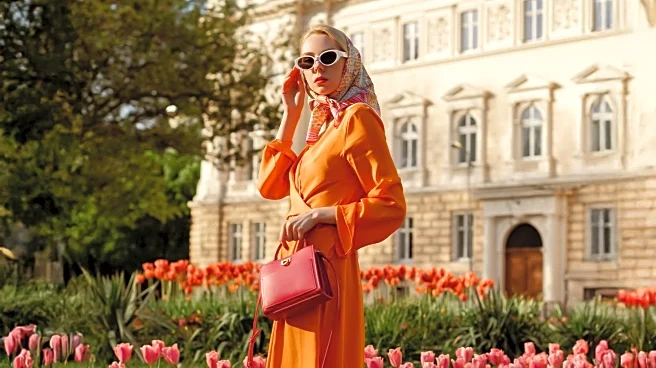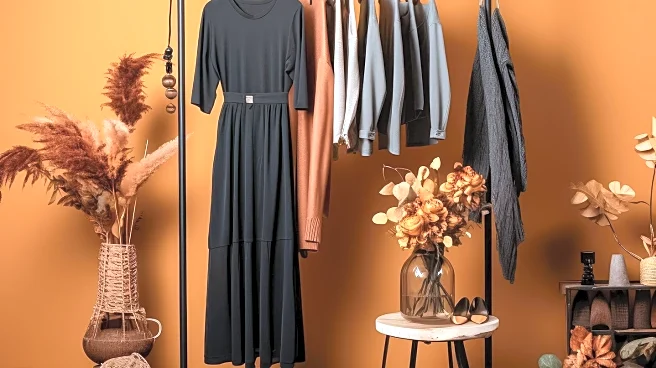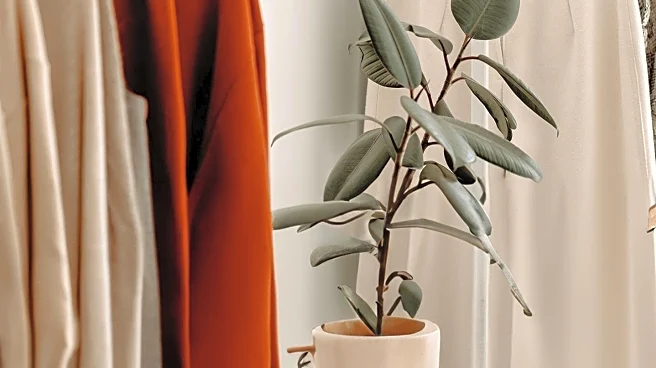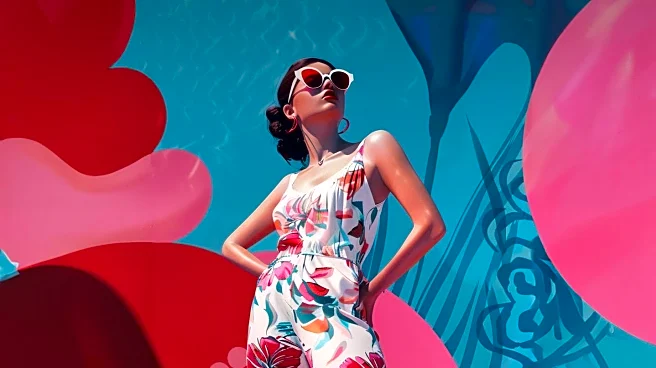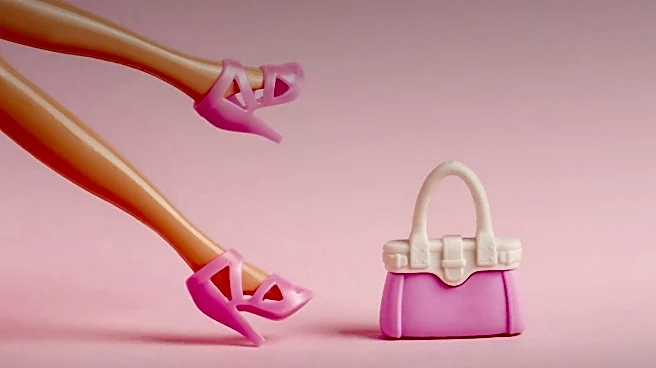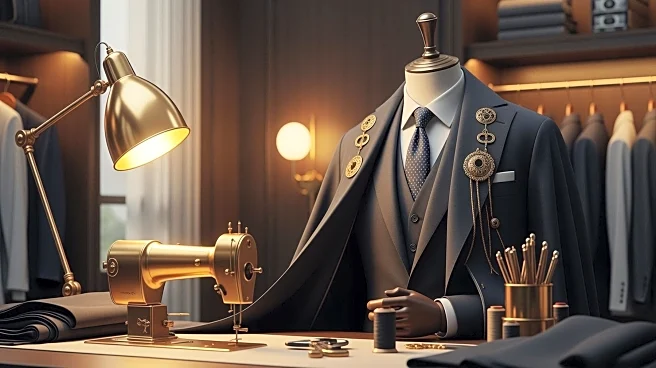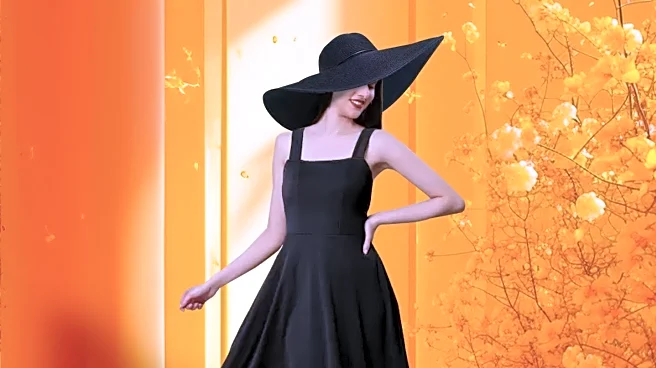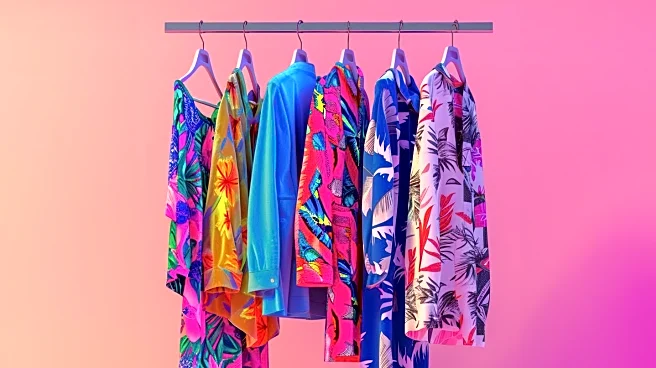What's Happening?
Vogue has published an article detailing cultural inspirations drawn from the Spring 2026 fashion shows. Designers have taken cues from various cultural and historical sources to create their latest collections.
For instance, Dynasty and Soull Ogun were inspired by '20,000 Leagues Under the Sea' for their collection and L’Enchanteur’s first runway show. LaQuan Smith incorporated elements from 'Tomb Raider,' specifically Lara Croft, into his designs, featuring lace-up leather pants and wide crocodile belts. Gabriela Hearst drew inspiration from the Aleister Crowley Thoth Tarot Deck, using interpretations of the deck’s major arcana for her prints and jacquards. Additionally, Louise Trotter reimagined the Bottega Veneta clutch from the movie 'American Gigolo,' while Anna Sui reflected on D.H. Lawrence’s novel 'Lady Chatterley’s Lover,' connecting it to the novelist’s self-imposed exile and the creative enclave in Taos, New Mexico.
Why It's Important?
The integration of cultural and historical elements into fashion design highlights the industry's ongoing dialogue with broader cultural narratives. By drawing inspiration from literature, film, and historical figures, designers are able to create collections that resonate with diverse audiences and reflect a rich tapestry of influences. This approach not only enriches the fashion landscape but also encourages consumers to engage with cultural artifacts in new ways. The use of such inspirations can lead to increased interest in the original works and figures, potentially driving cultural and economic activity in related sectors such as publishing, film, and art. Furthermore, these creative choices can influence trends and consumer preferences, impacting the fashion industry’s direction and market dynamics.
What's Next?
As designers continue to explore cultural and historical themes, the fashion industry may see a rise in collaborations with artists, filmmakers, and authors to further integrate these elements into their collections. This trend could lead to more immersive fashion experiences, such as themed runway shows or interactive exhibitions. Additionally, the focus on cultural inspirations may encourage fashion brands to invest in storytelling and content creation, enhancing their marketing strategies and consumer engagement. Stakeholders in the fashion industry, including retailers and marketers, will likely monitor these developments to adapt their offerings and capitalize on emerging trends.
Beyond the Headlines
The use of cultural inspirations in fashion design raises questions about intellectual property and the ethical considerations of borrowing from diverse sources. Designers must navigate the balance between homage and appropriation, ensuring respectful and informed use of cultural elements. This trend also highlights the potential for fashion to serve as a platform for cultural exchange and dialogue, fostering greater understanding and appreciation of different traditions and histories. As the industry evolves, it may increasingly focus on sustainability and ethical practices, aligning creative inspirations with responsible production and consumption.
